Everything You Need To Know About Safe Sunscreen
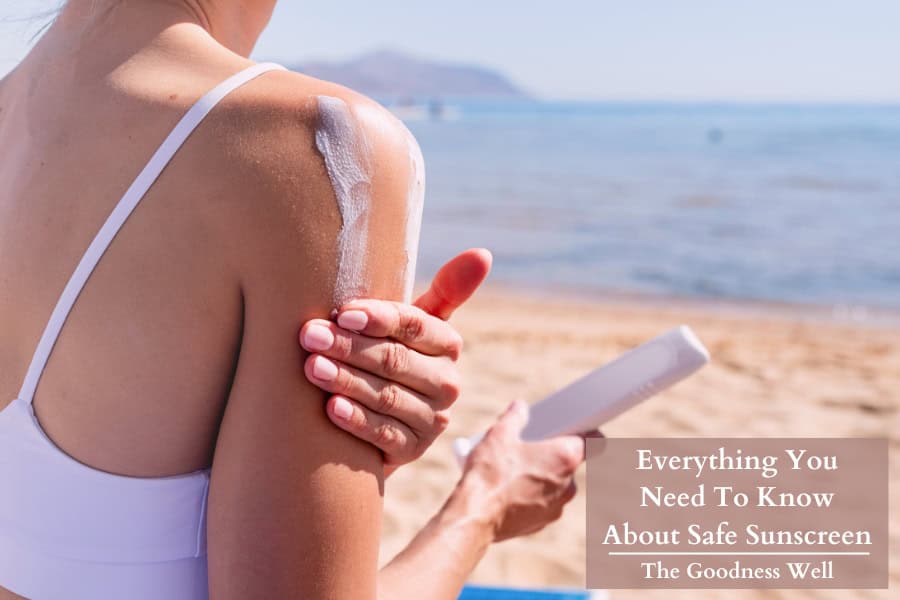
Is it me or has sunscreen become so much more complicated than it used to be?… I feel like as a kid, mom would just spray it on and you’d ask no questions.
But now, you’ve got all the questions…and lucky for you I’ve got all the answers… at least as far as sunscreen goes lol.
Let’s get into it!
TL;DR
Sunscreen is great when used properly but many of us are using it wrong. A lot of sunscreens contain harmful chemicals that can be toxic to our health and our precious marine life. Avoiding sunscreens made with oxybenzone and octinoxate is a great way to choose safer sunscreen. You also want to use a broad-spectrum sunscreen that protects against UVA and UVB rays. Going for a high SPF doesn’t eliminate the need for reapplication.
So let’s agree on one thing. You NEED sunscreen regardless of your skin shade or type.
As a resident of Texas, I can tell you firsthand the sun loves all of us, even in the winter.
According to research, skin cancer cases have increased 27% over the past decade!
Either we’re doing something wrong or our sunscreen is doing us wrong.
Chemicals In Sunscreen
The unfortunate truth is that a lot of sunscreens contain ingredients that can raise health and safety concerns.
In the U.S., sunscreens often contain chemicals like oxybenzone and octinoxate, which can be absorbed into the skin and have been linked to hormone disruption and allergic reactions.
Sunscreens containing these chemicals have been banned in Key West and Hawaii due to their toxic effects on marine ecosystems.
The U.S. Food and Drug Administration (FDA) classifies sunscreen ingredients as “GRASE” or “Generally Recognized as Safe and Effective,” based on their safety and effectiveness.
Only two active ingredients, zinc oxide, and titanium dioxide, are considered GRASE for sunscreens, meaning they are deemed safe for use based on current data.
However, many chemical filters used in U.S. sunscreens, like oxybenzone and octinoxate, are not considered GRASE due to limited safety data.
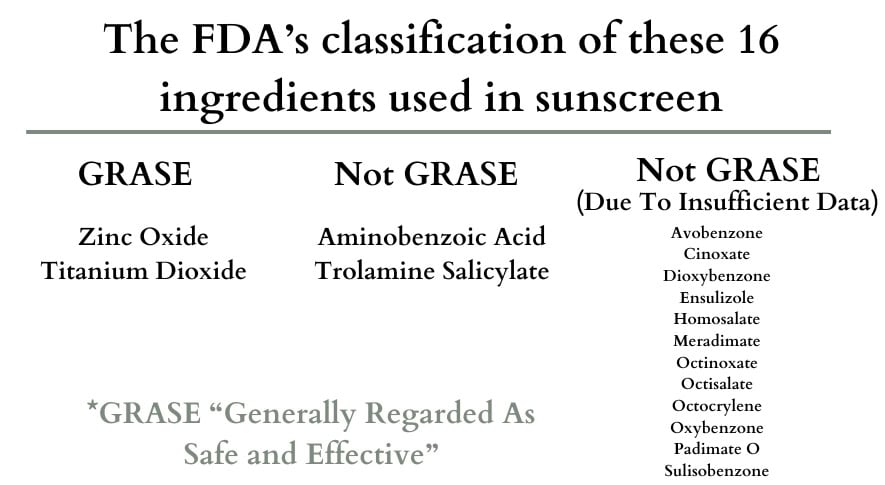
European sunscreens have stricter regulations and often use ingredients that provide better UVA protection with fewer harmful chemicals, such as Tinosorb and Mexoryl SX, which are not yet approved in the U.S.
However, because the U.S. has different standards, sunscreen manufacturers can legally use oxybenzone and octinoxate concentrations higher than the European limits.
What’s The Difference between UVA and UVB?
UVA and UVB are types of ultraviolet (UV) radiation that come from the sun and can affect the skin differently.
UVA:
- Wavelength: Longer wavelengths, which allow them to penetrate deeper into the skin.
- Effects on Skin: Responsible for skin aging, and wrinkles, and can contribute to skin cancer.
- Prevalence: Present during all daylight hours and can penetrate clouds and glass.
- Intensity: Less intense than UVB, but it’s about 95% of the UV radiation
UVB:
- Wavelength: Shorter wavelengths, which makes them more likely to affect the skin’s outer layers.
- Effects on Skin: Causes sunburn and plays a role in the development of skin cancer.
- Prevalence: Strongest during mid-day and varies with the season and location.
- Intensity: More intense than UVA but accounts for only about 5% of UV radiation
Misconceptions about SPF protection
Just because a sunscreen has a high SPF doesn’t mean you’re being protected from both UVA and UVB rays.
Here are a few more misconceptions about SPF.
- Poor UV Balance: High SPF numbers mainly indicate protection from UVB rays (which cause sunburn), but not from UVA rays, which penetrate deeper into the skin and can cause serious long-term damage. In the U.S., higher SPF sunscreens tend to offer less UVA protection.
- False Sense of Security: People using high SPF sunscreens might believe they are fully protected and spend more time in the sun than they should, exposing themselves to more damaging UV radiation and increasing their risk of skin damage.
- Higher Chemical Exposure: Higher SPF sunscreens contain more chemicals to achieve their ratings. These chemicals can penetrate the skin and might pose health risks, like hormone disruption and allergic reactions.
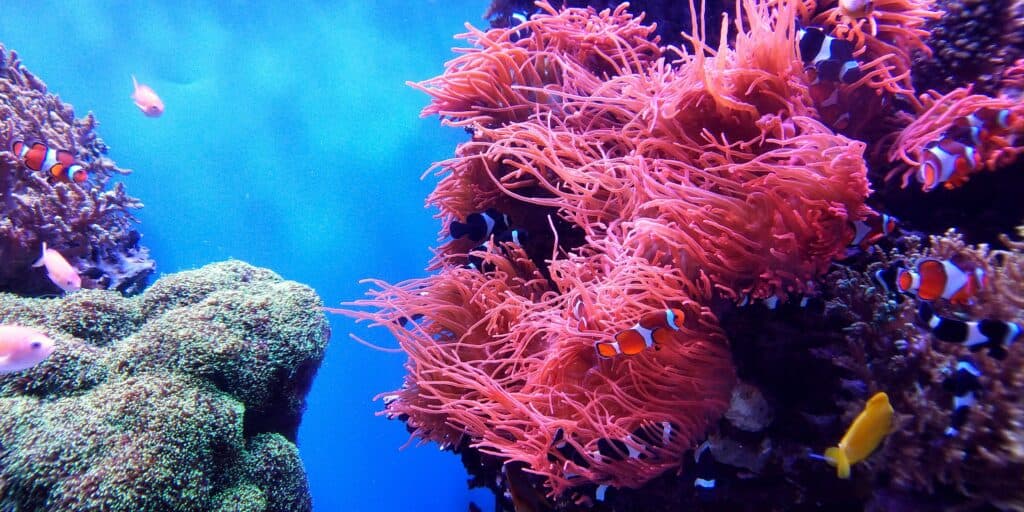
What About Reef-Safe Sunscreen?
Reef-safe sunscreen is formulated to avoid ingredients known to harm marine life, especially coral reefs.
Remember oxybenzone and octinoxate? Yeah… those chemicals have been linked to coral bleaching and other marine damage.
To ensure you’re buying reef-safe sunscreen:
- Check the Ingredients: Look for sunscreens free from oxybenzone, octinoxate, with mineral-based ingredients like zinc oxide or titanium dioxide.
- Look for Labels: Some products are labeled as “reef-safe” or “reef-friendly.” but be skeptical and do your research!
- Research Brands: Many brands specifically market reef-safe sunscreens and provide detailed ingredient information. Checking their websites or reviews can help.
The Do’s & Don’t’s Of Sunscreen
Don’t:❌
- Buy a sunscreen with nanoparticles that can penetrate the skin and enter the bloodstream
- Use sunscreen with fragrances and perfume
- Use sunscreen with added insect repellant
- Ignore reapplication intervals(usually 60-80 minutes)
- Believe that water-resistant sunscreen means waterproof. Waterproof sunscreen doesn’t exist.
Do:✅
- Look for broad-spectrum sunscreen that protects against both UVA and UVB rays
- Reapply sunscreen according to reapplication instructions
- Use unscented sunscreen
- Buy reef-safe sunscreen
I hope you got all that! And if not we’ll always be here for questions and more info on how to make your life a little less toxic and better for you and the world we live in.
Until next time☀️


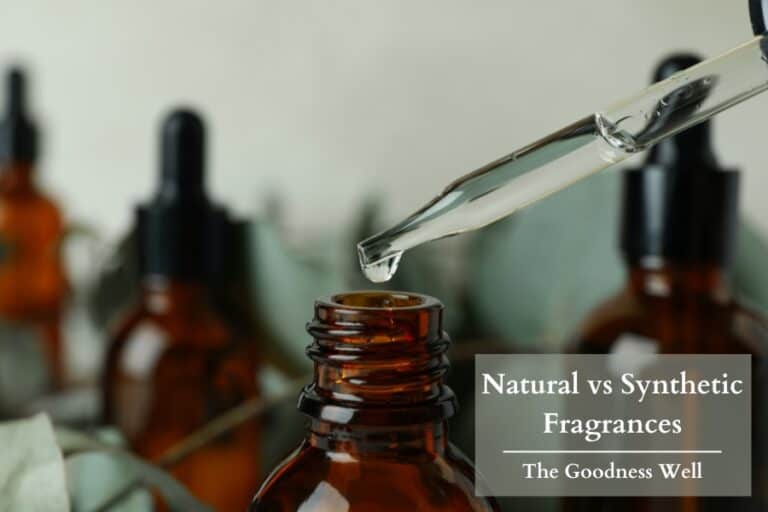
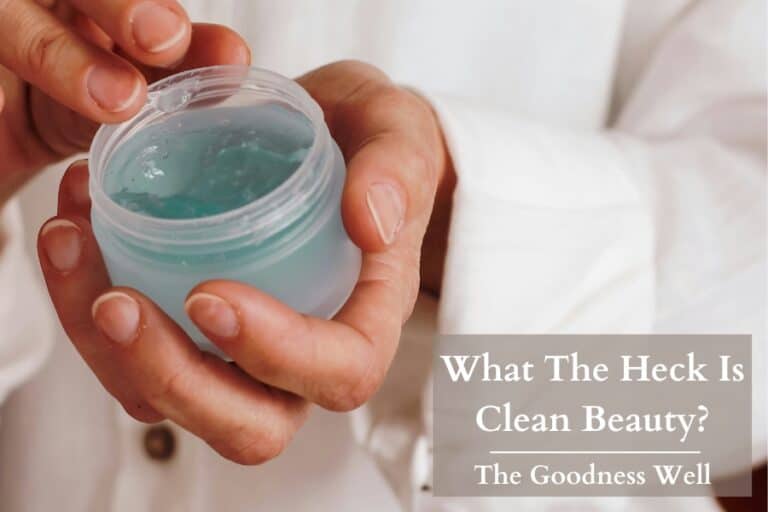
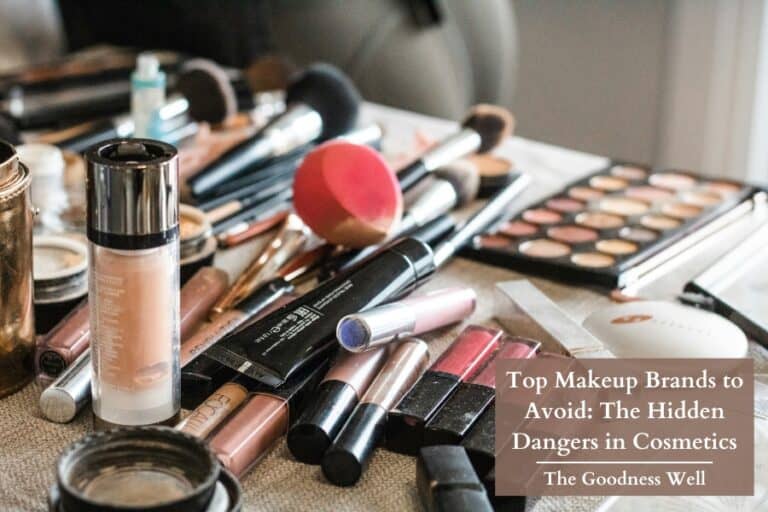
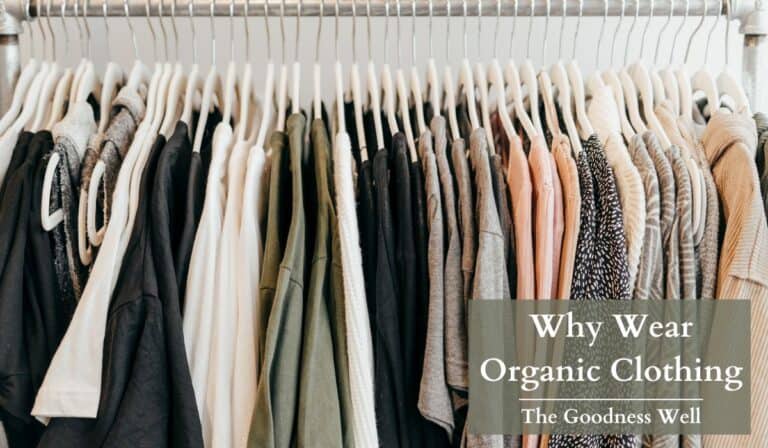
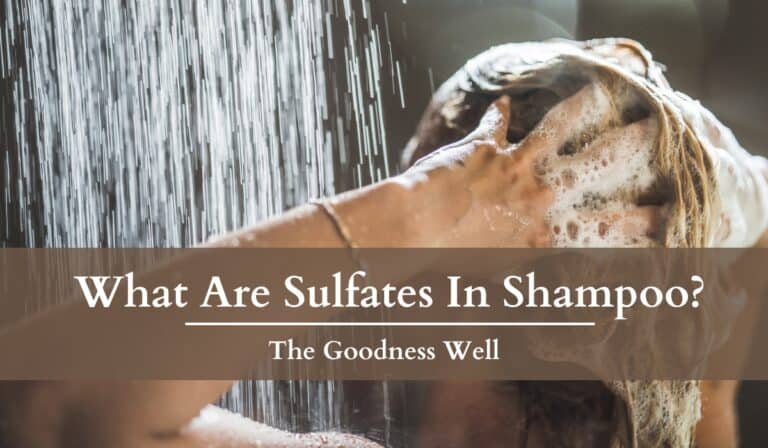
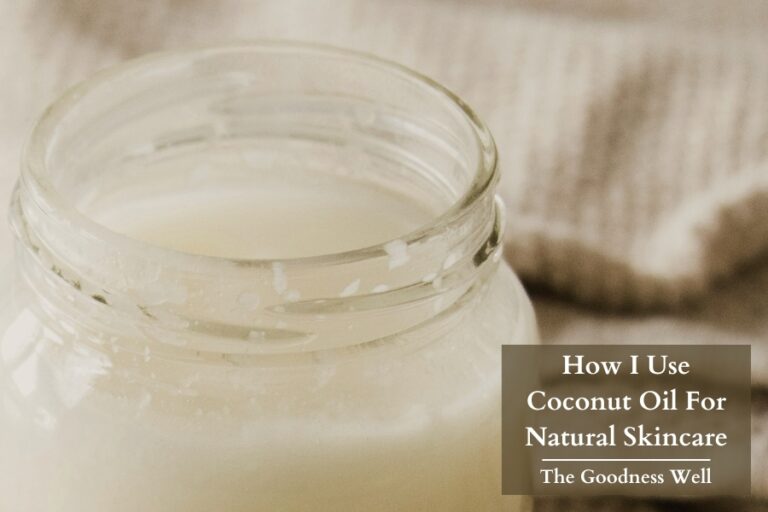
I enjoyed reading this, so informative!
Thank you